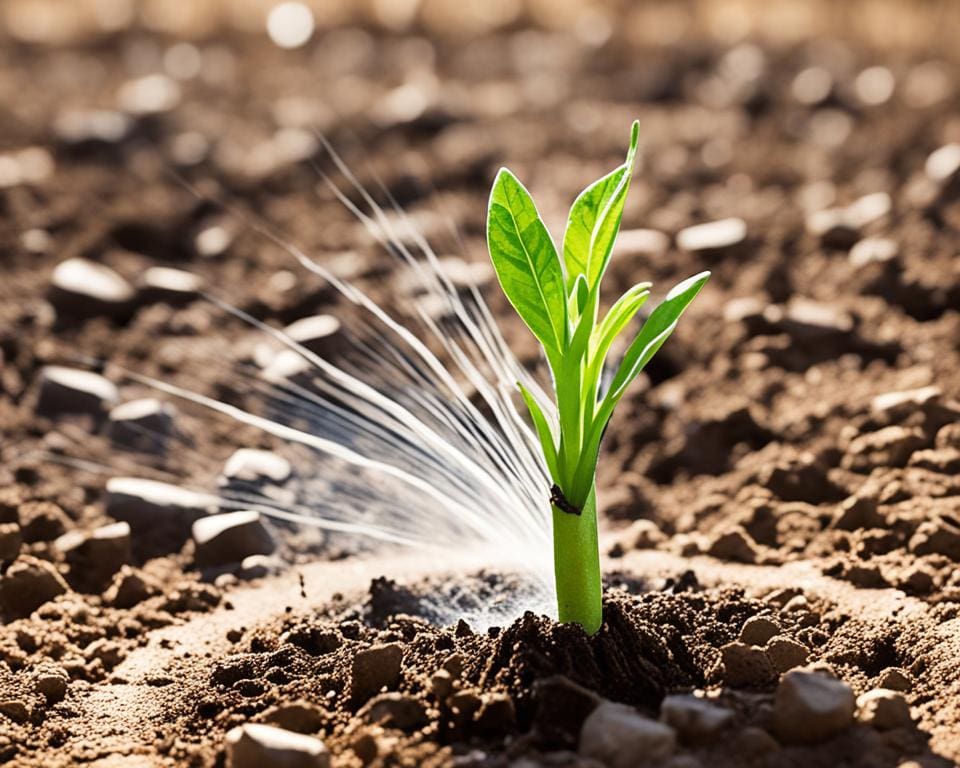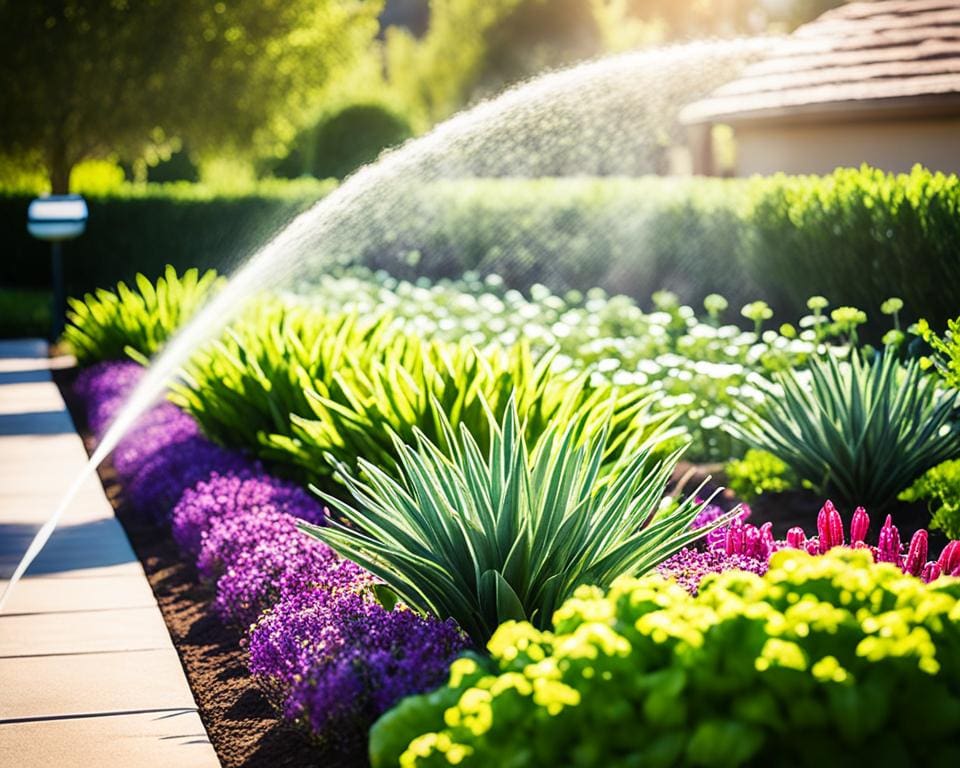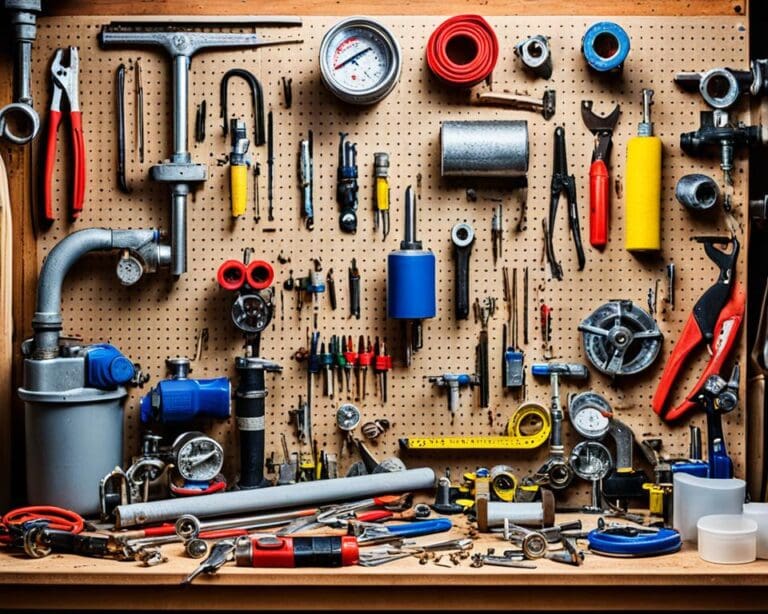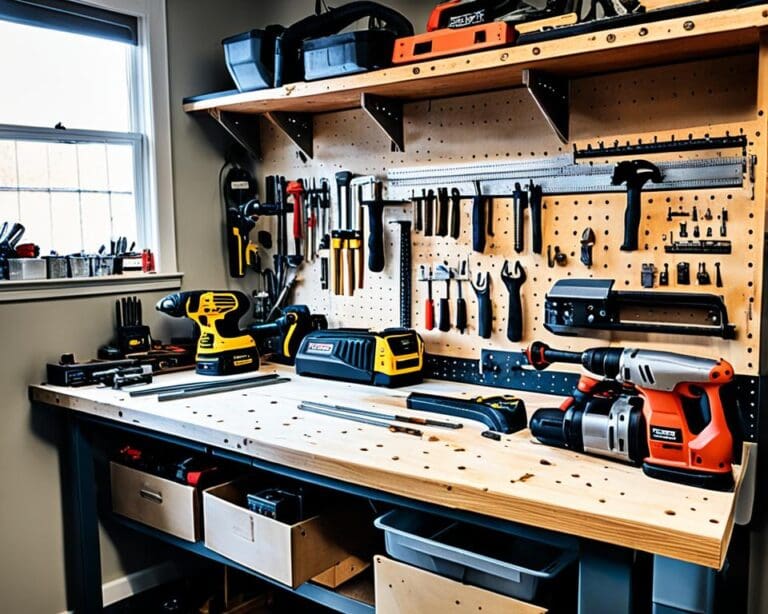Gardening lovers are always on the lookout for smart ways to water plants. With the world focusing on efficient watering, modern irrigation becomes crucial for plant health. Techniques like soaking the ground with hoses waste water and don’t always help all plants.
But, systems like drip irrigation change the game. They send water right where it’s needed, cutting down on waste and lost water due to evaporation. This shift towards smarter garden care is key in saving water and dealing with the climate changing around us.
Understanding the Importance of Efficient Irrigation Systems
Efficient irrigation systems are key for saving water in gardens. With water scarcity growing, it’s vital gardeners use water wisely to keep plants healthy. Modern techniques can sharply cut water use and make gardens beautiful and lush.
Water Conservation in Gardening
Keeping gardens sustainable requires saving water. Techniques like drip irrigation and micro-sprinklers target water right to the roots. This reduces waste from evaporation and runoff. By checking the soil often, gardeners can water just right and help plants grow better.
Benefits of Efficient Garden Watering
Watering gardens efficiently has many benefits. For example, drip irrigation systems are about 90% effective in getting water to plants. This is much better than old methods, which are 50-60% effective. They allow gardeners to use less water, saving money each month. Also, collecting rainwater in barrels is a good way to water plants responsibly.
Impact of Climate on Irrigation Needs
Climate strongly influences how we water gardens. In hot or dry areas, gardens need special systems. Smart controllers and sensors help adjust watering based on the weather. This makes sure plants stay healthy, even with little rain. Knowing about the climate helps us use every drop of water well for lush gardens.

Irrigation Systems: Smarter Ways to Water Your Garden
Gardening is changing, and so are the ways we water our plants. Advanced irrigation technology is a big part of this change. It offers many tools and systems for better water management. By learning about different technologies, gardeners can improve how they water their gardens.
Types of Advanced Irrigation Technology
There are many advanced systems for smart water use. Some popular ones include:
- Drip irrigation systems: These give water right to plant roots, cutting down on evaporation and runoff.
- Soaker hoses: These hoses gently water the garden through many tiny pores.
- Sprinkler systems: Great for big areas, they spread water evenly to all plants.
- Self-watering containers: Using a reservoir system, these keep potted plants perfectly watered.
How Automated Watering Systems Work
Automated systems make it easy to keep the soil moist. They often use:
- Timers: To schedule watering based on what each plant needs.
- Sensors: These check the soil and weather and adjust the water flow.
- Controllers: They let gardeners change settings and manage watering from anywhere.
This smart tech helps save a lot of water. Especially when it’s set up to react to the weather.
Integrating Smart Garden Irrigation Solutions
Using smart irrigation changes how we garden. With technology, gardeners can:
- Manage watering times from afar.
- Get updates on moisture levels and tweak watering as needed.
- Use rainwater harvesting to save and use water later.
Smart systems keep gardens healthy and help the environment by saving water. As these technologies get easier to use, gardeners see a big drop in their water bills and their environmental footprint.
Implementing Water-Saving Irrigation Systems in Your Garden
For gardeners wanting to create a sustainable garden, using water-saving systems is key. Options like drip irrigation and soaker hoses help keep water use low. They send water directly to plant roots, leading to less evaporation and healthier plants. Adding mulch can also help keep soil moist, making your garden’s water system more effective.
Choosing the right system means looking at your garden’s layout. It’s important to know the water needs of different plants. Trees and shrubs, for instance, don’t need water as often because their roots go deep. Using deep irrigation can help your plants grow strong roots without wasting water. This approach helps avoid problems like shallow roots and pollution from runoff.
Smart garden watering solutions, like controllers with rain sensors, adjust watering based on the weather. This can stop unnecessary watering, saving a lot of water. It’s also important to set up your system correctly to avoid watering paths instead of plants. By using advanced water-saving techniques, gardeners can help their plants thrive and conserve water at the same time.









